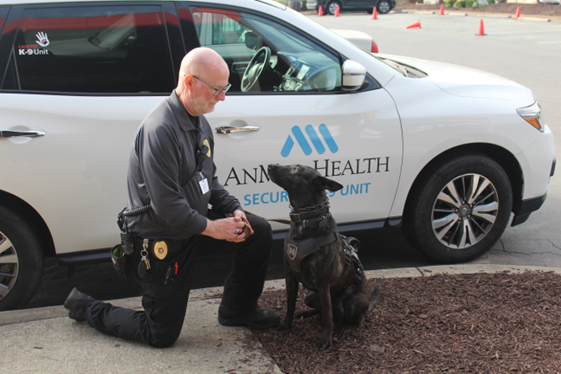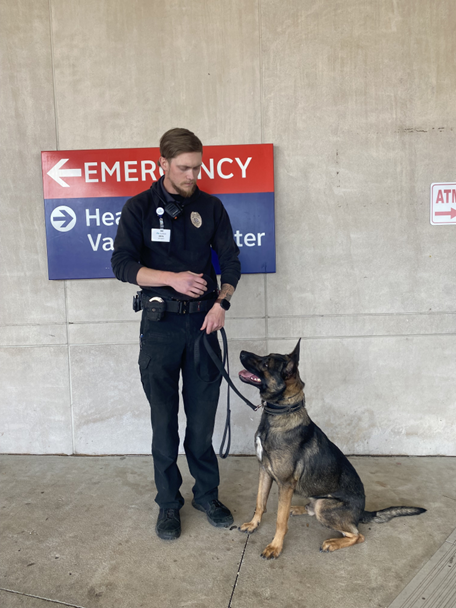Dogs to the Rescue
Given the dynamic challenges of healthcare settings, ensuring the safety and security of these facilities, particularly hospitals, is paramount. In recent years, we have seen many hospitals take an innovative approach to bolstering hospital security by recruiting man’s best friend—dogs. These specially-trained canine companions are integrated into a facility’s security protocols and play a vital role in fortifying the safety measures within hospital premises. The result is a unique blend of deterrence, detection, and support that can be arguably unmatched in the modern security landscape.
One of the chief advantages of this approach is that trained security dogs serve as a powerful deterrent to potential threats. Their mere presence can discourage trespassers, vandals, and individuals with malicious intent. Case in point—when the AnMed system implemented South Carolina’s first Hospital Security K9 Team in 2020, they saw their emergency department reduce security-related incidents by as much as 50%. In addition to the reduction in incidents, the staff’s perception of their personal safety improved by as much as 80% when a K9 unit was working.
AnMed’s security team and leadership worked together to decide when and how to integrate dogs into their security measures. They currently have two handlers and two K9s—Steve and Raven, and Ben and Cees. Cees is just 18 months old, while Raven is 5. Staff at the hospital love having both dogs on campus. They are great in managing aggressive situations, but also provide staff with a sense of security when they see them walking the floors.

“Having Raven always makes me feel safer,” reports Shana Turner, a nurse in the Emergency Department. “I always feel more comfortable when I call security and Raven is there. My patients even like seeing her [too]—dogs just have a way of making people feel better and more comfortable.”
Hospitals, often sprawling complexes with numerous access points, also benefit from the heightened visibility provided by security dogs. Their mobility and keen senses make them invaluable assets in patrolling and monitoring the surroundings, creating an additional layer of protection.

“K9s have mostly been used in the emergency department, which is the forefront of any potential attacks or aggressive situations,” points out Todd O’Quinn, Director of Safety and Security. “At least 70% of their time is spent posted there for mitigation.”
To ensure the success of this innovative security strategy, dogs undergo rigorous training programs tailored to the unique challenges of healthcare environments. Handlers receive specialized training as well, fostering a strong bond between the canine and human members of the security team. Integration with existing security measures ensures a seamless collaboration that maximizes the effectiveness of the entire security apparatus.
The inclusion of trained security dogs in hospitals represents a forward-thinking approach to fortifying healthcare institutions against various security threats. Their multifaceted roles in deterrence, detection, and support not only elevate the level of security but also contribute to a more positive and reassuring environment for patients and staff alike. As the healthcare landscape evolves, the utilization of canine security teams can be an innovative and effective solution for enhancing hospital security.
